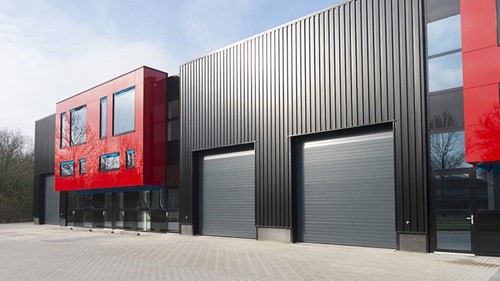Brookfield secures major tenant for Sydney CBD tower
Global development giant Brookfield has secured another blue chip tenant in financial services group Moelis Australia for its $2 billion Brookfield Place Sydney, as occupancy begins to bounce back in the city’s CBD office market.
Global development giant Brookfield has secured another blue chip tenant in financial services group Moelis Australia for its $2 billion Brookfield Place Sydney, as occupancy begins to bounce back in the city’s CBD office market.
Brookfield said Moelis had signed a 4,000 square metre lease at the Wynyard tower, where construction group Multiplex is adding the finishing touches to the precinct.
Other anchor tenants include NAB, Allianz, Brookfield and Hub.
Moelis will take up two full floors, as well as part of another, on a seven year lease that commences in February next year.
“When we started the development process for Brookfield Place over eight years ago we set out to develop a project that would make a significant contribution to the existing cityscape at the center of the Sydney CBD and that displayed premium tenant facilities, outstanding amenity and leading sustainability credentials,” Brookfield Properties executive vice president Carl Schibrowski said.
“When you look at the quality of the commercial tenants we have been able to attract, it’s clear to see we have hit all of those benchmarks we set for ourselves.
“Prior to completion, we have now committed over 90 per cent of the available area and we have some great prospects for the remaining space.
“While COVID has impacted some economic activity, we continue to see good demand for high quality space right across Australia.”
Moelis Australia joint chief executive Julian Billings said Brookfield Place Sydney satisfied the group’s desire to provide a market-leading level of amenity and wellbeing to its staff.
“Brookfield Place delivered on this requirement with its sustainability, building standards, open-plan design and central location making us very excited to call Brookfield Place our Sydney home in the future,” Mr Billings said.
The deal was brokered by commercial agency Savills Australia, on behalf of Moelis.
“When COIVD-19 pandemic fears were running high, economic recession was inevitable and it was unclear if (rather than when) the majority would return to an office, Moelis Australia jumped at the chance to secure their new headquarters with a point of difference," Kath Moss, director of occupier services at Savills Australia said.
“This is to be a leading, flexible and modern workplace that supports and enhances staff connectivity, teamwork, and collaboration along with health and wellbeing”.
Meanwhile, office workers are returning to the Sydney CBD at a higher rate than any other capital city, however occupancy remains low, according to the Property Council of Australia.
Sydney’s occupancy rate rose from 45 per cent to 48 per cent between January and February, with Brisbane the only other capital city to record an increase over the period, Property Council of Australia NSW executive director Jane Fitzgerald said.
“Sydney still has double the current occupancy rates of Melbourne, who recorded a drop in occupancy figures from 31 percent to 24 per cent. This shows the dramatic impact lockdowns have on our CBDs,” Ms Fitzgerald said.
“New South Wales saw slow but steady growth in the past month, building on the confidence in the state government and the lack of community transmitted COVID cases in the state.
“The sturdy position of the NSW Premier to keep borders open and only lock down local areas with local outbreaks is laying the path for life in a COVID managed way.
“The most recent results from our survey shows how great the challenge is balancing keeping the community safe, restoring community confidence and keeping the economy open.”
Outside of Sydney, the Property Council’s office occupancy survey revealed a deceleration in the rate of workers returning to offices.
Melbourne and Perth’s CBDs both had fewer workers at the end of February than they did at the end of January, with Melbourne’s office occupancy plunging to 24 per cent.
Perth’s occupancy rate was 65 per cent, while 64 per cent of offices in Brisbane are occupied, the Property Council said.
Property Council chief executive Ken Morrison said the results indicated there was a long way to go to fully reactivate commercial centres.
“It is clear that snap lockdowns have had an impact on CBD workers’ ability to return to their offices and their confidence to do so,” Mr Morrison said.
“While we’re all expecting to see more people working from home as part of the new post-COVID normal, thriving CBDs will be critical to Australia’s economic recovery.
“Lively city centres are not only important for the thousands of businesses who rely on foot traffic, but also for millions of jobs and hundreds of billions of dollars in broader economic activity generated in our CBDs.”
Mr Morrison said it was crucial for policymakers, employers and the property industry to work together to boost office occupancy levels.
“There is an economic imperative for all stakeholders to instigate policies and initiatives that will ensure our CBDs return to full activity as quickly as possible,” Mr Morrison said.
However, survey participants said workers’ preference for flexibility in working arrangements was the biggest barrier to achieving full occupancy, followed by government lockdowns and public health restrictions.





















